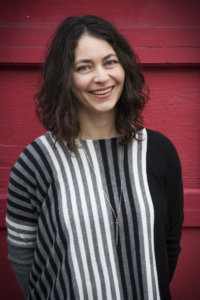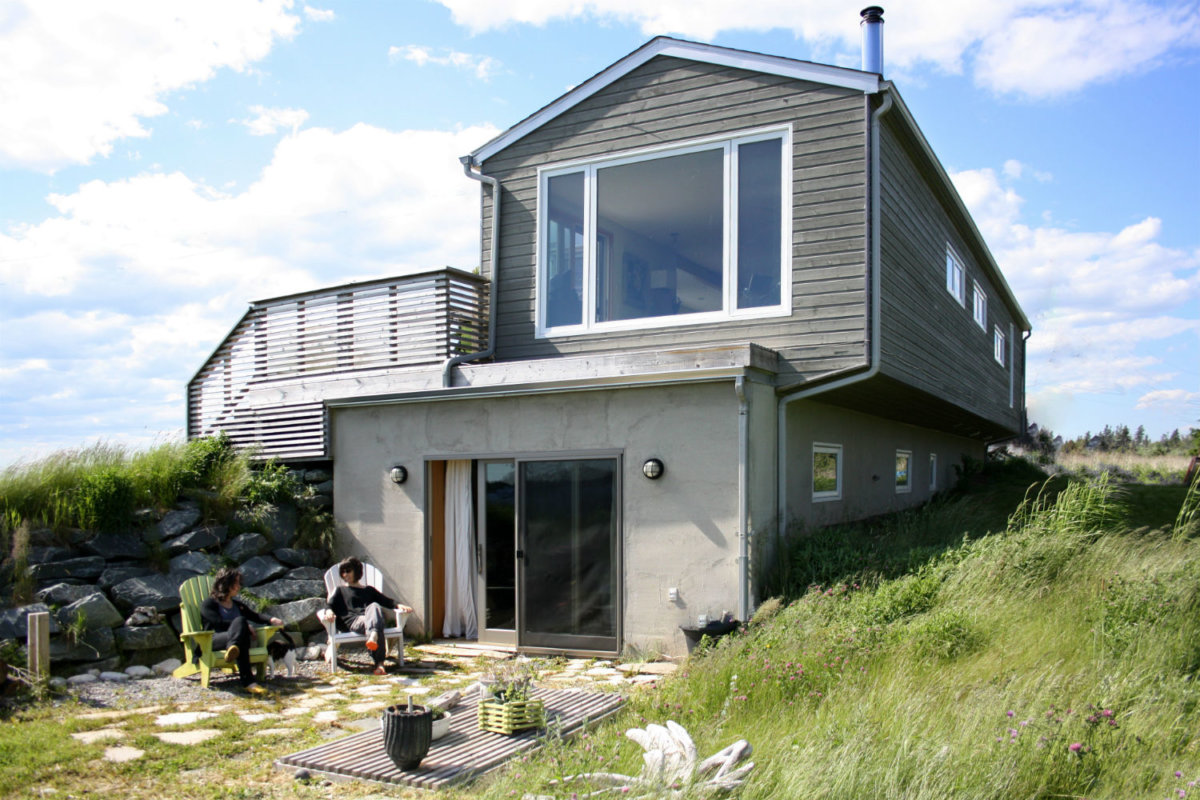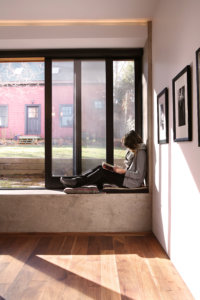Habit studio delights the senses: Judyann Obersi (BEDS‘95, MArch’97)

An early passion for architecture and design has led Judyann Obersi (BEDS‘95, MArch’97) on a amazing entrepreneurial-based career path culminating in her newest partnership: Habit Studio. Learn about her journey, the unique aspects of her practice and the exciting projects she is currently engaged with, in the following Q&A.
Where are you from? What events in your early life inspired your desire to pursue architecture?
I was born and raised in Curaçao, the Netherlands Antilles. I moved to Canada to pursue a career in architecture. One of my favourite pastimes growing up was driving in the countryside with my dad, looking at houses we liked and critiquing them. We also used to spend weekends in old plantation houses that were so well-designed for the Caribbean climate. So, from a very early age, the only education I ever considered was architecture school.
You came to Dal after 2 years of a Civil Engineering degree at UNB. What was memorable about your experience in the Architecture program and how did it shape your future?
Being one of the youngest in my year, and coming from a different country, the School of Architecture made a very strong impression on me. The fact that you have to get two years of undergraduate education under your belt before being accepted meant that I had schoolmates from varying educational, cultural and age backgrounds.
At the School they encourage collaboration between different years and the open studio environment allowed us to become a big part of each other’s lives.
My experience travelling to Turkey on the Rossetti scholarship also had a major impact. So at Dal it felt like learning about different cultures and human psychology came hand-in-hand with learning about design. I think that might have a lot to do with my interest in people and telling stories in our work.
Where did your career take you after graduation? How did the economic environment of the time impact this?
When I graduated, there was a very low percentage of architecture graduates being hired. Most of my classmates moved to the U.S. to work in architecture and others ended up pursuing other careers. I went into the film industry and worked there for about six years in set design departments. The contractual nature of the film industry means down periods when you are not employed. This allowed me to slowly start picking up small design projects and steer back into the world of architecture and design, which is where I felt I belonged.
Tell us about your approach to your career? How has your personality affected the path you have taken?
After marrying a Haligonian who is an avid sailor and skier, I learned both sports by jumping in feet first. It occurred to me recently that I never seem to take the most traveled path. I tend to go full-throttle and learn as I go. Once I did this with becoming an entrepreneur, I came to see this pattern of my personality.
That habit is what got me on the road to becoming an entrepreneur and into residential design all before pursuing my licensing in architecture ahead of many of my colleagues. They were smart enough to pursue their licensing first. I am finally on that path of becoming a full-fledged architect; however, I think this approach has given me some valuable and unique experiences to carry forward in my practice once I do become licensed. It let me learn the kinds of projects that I most enjoy. Taking my own route has perhaps even contributed to taking non-traditional approaches with projects. We are careful to ensure what we are proposing is aligned with client budgets. Our aim is to form great relationships with builders and work to have a dialogue with them from early on in all projects in something akin to a design-build experience.
It sounds like you have a strong entrepreneurial spirit and value collaboration. Tell us about your current partnerships?

Habit Studio Team
My new partnership with Lorrie Rand (BEDS ’97) is called Habit Studio. It is primarily a residential design practice. Our values at Habit Studio stem from our experiences over the years. Both Lorrie and I grew up with strong connections to nature, so forming a sustainable practice was important to us. We also want our houses to offer designs that are pleasing to all the senses and value comfort. Lorrie is a certified passive house designer. Passive houses, aside from being sustainable, offer extremely comfortable living spaces.
Lorrie and I collaborated with each other and with architects many years before forming our partnership. We see the work with architects, engineers and builders as an integral part of our practice and enjoy being able to be part of different teams based on strengths and experience needed. It informs what we do.
I have also always maintained a connection with the School of Architecture. The time I spend teaching as a sessional instructor allows me to explore the world of theory and ideas, which in turn informs our practice and helps define our values.

“Immobile Home” Seaforth, NS
All of the above helped shape my design partnership with Lorrie at Habit Studio. We both find residential work rewarding. Our decision to focus on the senses is founded in our interest in how occupants inhabit their homes and how people experience space. Design can have a profound impact on health and happiness. Lack of attention to subtle details can result in architecture that is one-dimensional and unsatisfying. Focusing on all the senses results in interesting exploration and lets us bring in elements of fun.
We understand that you have some unique projects in development that support important social causes. Can you tell us about those?
We are working on a couple of interesting not-for-profit projects at the moment with Anne Sinclair Architects (ASA). The first hospice in Nova Scotia is under construction under her practice and the concept is a pretty new narrative to this province. Anne has spent most of her career specializing in not-for-profit groups, and she has been a great mentor.
ASA and I are also working on a sustainable housing and community project called “from the ground up”. The original vision came from women incarcerated at the Central NS Correctional Facility and a guard there as part of the collaborative documentary Conviction, a film that envisions alternatives to prison through the eyes of women behind bars.
We were recruited by the filmmakers, Nance Ackerman, Teresa MacInnes and Ariella Pahlke to be part of the process and the project will be designed in consultation with the women who will live and work there. The film is still in production, due to be released in early 2019.
Not often do architects and designers get to help shape the concept of a project at inception. So it’s a privilege to work with this team of women.
What is your favorite part of your job?

“Gottingen House” Halifax, NS
I like how this career offers so much variety. There are so many different components and relationships built with the way we run our design practice. We are always trying to find new ways to approach what we do.
Our method of searching to unfold the story of each house and client is particularly enjoyable. Every house is contemplated in terms of site, culture and functional requirements; however, we also consider the house in more poetic terms. The story of the house is to us the essence of the house. That storyline helps us to see our projects as individual entities with unique personalities.